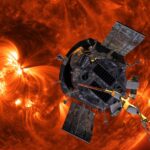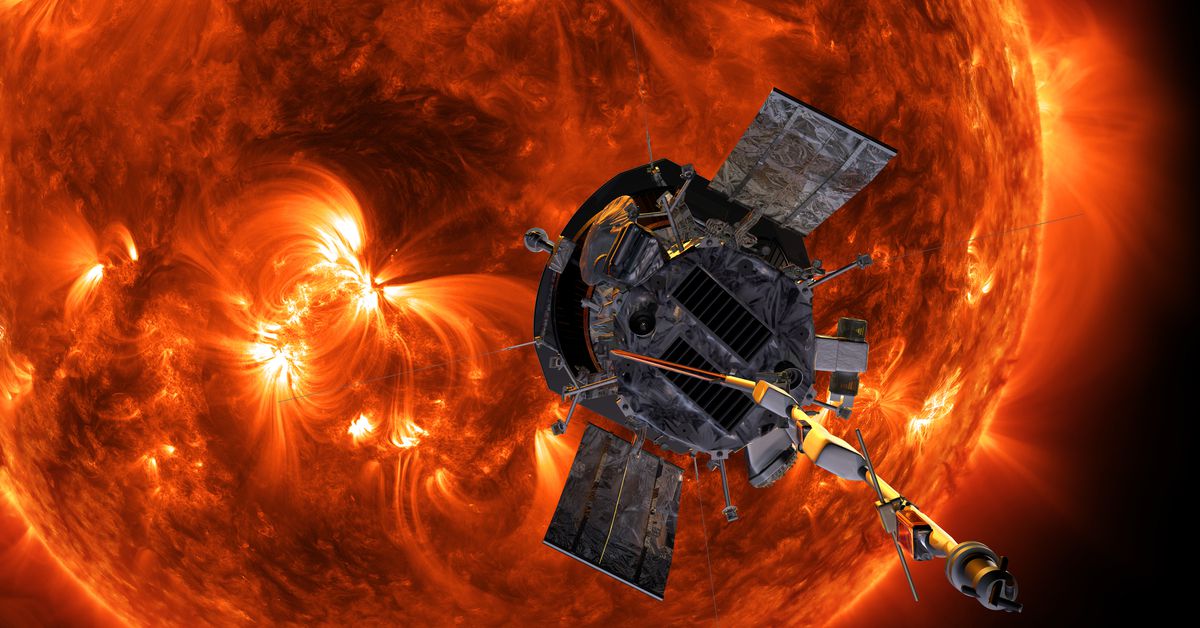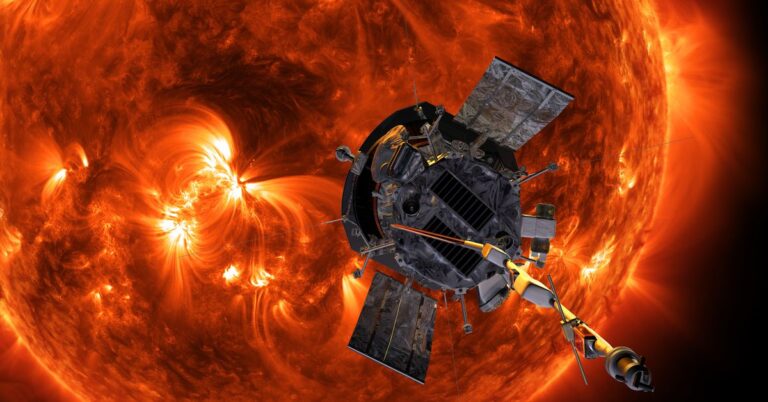The Mission of the Parker Solar Probe
Launched on December 20, 2018, by NASA and the Johns Hopkins Applied Physics Laboratory, the Parker Solar Probe (PSP) is a groundbreaking mission designed to explore some of the most extreme conditions in our solar system. Its primary objective is to study the Sun’s corona—the hottest and most dynamic part of our star—by closely observing it from just 3.8 million miles (6.1 million kilometers) above its surface.
Closest Approach: A Historic Achievement
The PSP set course for the Sun, aiming to achieve an unprecedented proximity of 430,000 miles per hour (690,000 kilometers per hour) as it passed within 250,000 miles (401,000 kilometers) of its surface on December 24. This closest approach marks a historic milestone, not just for the probe but also for human exploration at such distances from Earth.
Operational Challenges
During this critical phase of its journey, the PSP was out of contact with mission operations for extended periods. This period of separation allowed the probe to conduct autonomous operations, demonstrating the robustness and reliability of its systems under extreme solar conditions.
A Breakthrough in Solar Physics
The significance of this flyby cannot be overstated. The PSP is expected to transmit detailed data on its operational status by January 1, confirming its success. This close encounter will provide invaluable insights into the Sun’s corona, its magnetic fields, and the processes that sustain solar wind.
Understanding Solar Wind and High-Energy Particles
The PSP’s mission is multifaceted. Its primary goals include:
- Studying Solar Wind: The Sun’s solar wind consists of a stream of charged particles ejected from its surface at millions of miles per hour. By observing this phenomenon up close, scientists can better understand how it propagates through the solar system.
- Exploring High-Energy Particles: The PSP will monitor particles accelerated to speeds nearing light speed, providing critical insights into their origins and behavior.
Designing for Extreme Conditions
To ensure survival in these harsh conditions, the PSP is equipped with an advanced system of instruments. At its closest point to the Sun, the probe faces intense solar radiation—a threat that could severely compromise its systems otherwise.
The probe features a sun-facing heat shield capable ofwithstanding temperatures exceeding 2,500 degrees Fahrenheit (1,370 degrees Celsius). This shield protects the Probe’s sensitive equipment from the raw heat. Yet, despite this protection, the rest of the Probe remains at just 85 degrees Fahrenheit (-46 degrees Celsius), ensuring optimal functionality.
A Legacy of Exploration
The PSP’s success is not only a testament to human ingenuity but also a significant milestone in our quest to understand the Sun and its influence on Earth. By providing unprecedented insights into solar physics, this mission paves the way for future explorations at even closer distances.
Future Missions and Discoveries
As the PSP continues its journey, it will undoubtedly contribute to our understanding of the Sun’s dynamics. The data transmitted by the Probe will help refine models of the solar corona, improve predictions of solar activity, and enhance our ability to protect Earth from its effects.
In conclusion, NASA’s Parker Solar Probe has achieved a monumental milestone—a closer look at the Sun than ever before. This achievement underscores humanity’s ongoing fascination with and quest to comprehend the universe we inhabit.
























